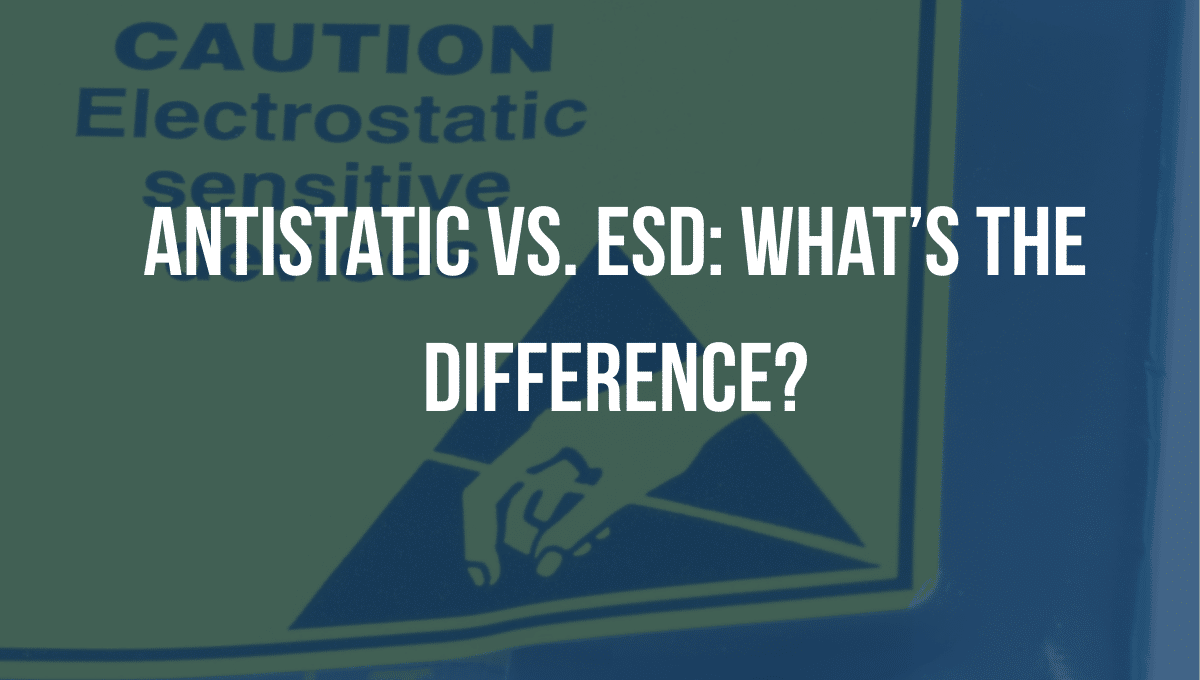In industries where sensitive electronics, flammable materials, or explosive environments are present, controlling static electricity is critical. Two commonly used terms—antistatic and ESD (Electrostatic Discharge)—are often confused, but they refer to different levels of protection against static electricity. Understanding the distinction can help you choose the right products and procedures to keep people, equipment, and products safe.
What Is Antistatic?
Antistatic refers to materials or measures that prevent the buildup of static electricity. These solutions are designed to inhibit the generation and accumulation of static charges, which can attract dust, disrupt sensitive equipment, or cause mild shocks.
- How It Works: Antistatic materials have a surface resistance between 10⁹ and 10¹¹ ohms, allowing a slow, controlled dissipation of static charges.
- Common Applications:
- Packaging materials (e.g., bags, foam)
- Carpets, garments, and work surfaces in cleanrooms
- Products used in environments where static attraction is a nuisance (e.g., dust-prone areas)
- Limitations: Antistatic protection does not necessarily safeguard against sudden electrostatic discharge (ESD) events.
What Is ESD (Electrostatic Discharge)?
ESD refers to the sudden flow of electricity between two charged objects. This can occur when different potentials come into contact or close proximity, resulting in a rapid transfer of static charge. ESD protection is designed to prevent damage to electronic components or ignition in hazardous environments.
- How It Works: ESD-safe materials have a lower surface resistance (typically 10⁶ to 10⁹ ohms), providing a safe path for static charges to flow to ground without causing a spark.
- Common Applications:
- Electronics manufacturing and assembly
- Handling of integrated circuits (ICs), circuit boards, and microchips
- Labs and industries where sparks could ignite flammable substances
- Standards: ESD protection often complies with standards like ANSI/ESD S20.20 or IEC 61340.
Key Differences Between Antistatic and ESD
| Aspect | Antistatic | ESD |
|---|---|---|
| Purpose | Prevents static buildup | Prevents sudden discharge sparks |
| Surface Resistance | 10⁹ – 10¹¹ ohms | 10⁶ – 10⁹ ohms |
| Protection Level | Low to moderate | High |
| Applications | Dust control, mild static prevention | Electronics, explosives, flammable environments |
| Example Products | Antistatic bags, gloves, floor mats | ESD-safe workstations, wrist straps, footwear |
Why the Confusion?
Many people use the terms interchangeably because both deal with static electricity. However:
- Antistatic = controlling charge buildup.
- ESD = controlling charge discharge.
For example, an antistatic mat might prevent static from building up on a workbench, while an ESD mat would safely channel any existing charge to ground.
Which One Do You Need?
- Choose Antistatic If:
- You need to avoid dust attraction or minor static shocks.
- You work in packaging, textiles, or non-electronic environments.
- Choose ESD If:
- You handle sensitive electronic components.
- You work with flammable gases, chemicals, or explosives.
Safetyware’s ESD and Antistatic Solutions

Safetyware offers a range of products designed for both antistatic and ESD protection:
- ESD Footwear: Dissipates static safely to ground.
- Antistatic Workwear: Reduces static generation in cleanrooms.
- ESD Testing Equipment: Validates resistance levels for compliance.
Conclusion
While antistatic and ESD both address static electricity, they serve different purposes. Antistatic measures prevent static buildup, while ESD protection ensures that any discharge happens safely. Using the right type of protection—based on your environment and risks—is essential for safety and operational efficiency.
Stay grounded—choose the right static control solution for your needs.
For more updates on safety news and insights, visit our website at Safetyware.
Any Questions? Contact Us:
📩 Email: [email protected]
🌐 Website: www.safetyware.com

